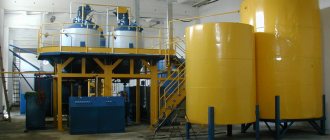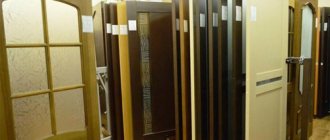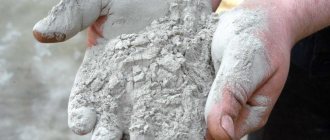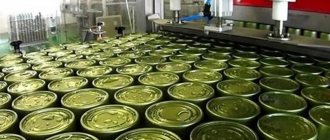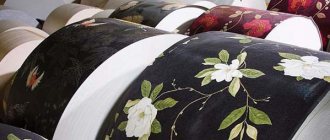Charcoal is an environmentally friendly type of fuel that is in demand among fast food establishments, as well as among the general population. Charcoal production as a business attracts entrepreneurs with its easy technology and constant demand for products. Coal is used not only for domestic purposes, it is actively used in metallurgy, the chemical industry, as a building material, and even as an additive to animal feed. Statistics show that cafes and restaurants alone use more than 4 tons of this fuel per year. At the same time, getting into business is quite easy for everyone: the production technology is simple, and the amount of start-up capital is average for a business.
Types of charcoal
There are three types of charcoal:
- Black – made from soft wood (linden, aspen).
- White – made from hard wood (birch, oak).
- Red – this type is made from charcoaling coniferous trees.
To produce 1 ton of charcoal you will need from 7 to 12 cubic meters. meters of raw materials, it also all depends on the breed. When made from birch, the least amount of firewood is required - 7-8 cubic meters, but soft-leaved trees will require 11-12 cubic meters.
According to GOST, coal is separated into grades A, B and C. The grade in this case is greatly influenced by the density of the resulting coal, the mass fraction of ash, water and the humidity of the product.
Selection of premises and equipment
To organize production, it is recommended to select a site outside the city (distance no more than 5-10 km), as well as a production or warehouse type premises with a total area of 180-200 sq. m. meters _
Ideally, the knowledge should be located close to the sources of raw materials, this will significantly reduce transport costs.
In order to start purchasing equipment, you should have at least a general understanding of the charcoal production process. In special ovens, the raw materials are subjected to oxygen-free combustion and then dried. Next, all that’s left to do is package the coals and pack them (by hand or using specialized equipment).
The production capacity of the furnace, suitable for small businesses, is up to 400 kg per day . As practice shows, manual packaging is extremely labor-intensive and ineffective. Therefore, in addition to the combustion furnace (costing 800-850 thousand rubles), packaging equipment is added to the list of necessary equipment.
It is not advisable to purchase a high-performance furnace right away. At the stage of business development, it will be difficult to find buyers willing to purchase charcoal in large quantities.
How to write a business plan for the production of toilet paper yourself - see here. If you are interested in where to start a hotel business in Russia, read this material.
Where is charcoal used?
The scope of use of this material is very wide. It gained the greatest popularity in everyday life, in particular for cooking: kebabs, barbecues and more. Coal is also actively used for heating houses, in home fireplaces.
In the case of industrial applications, it is used as a water purifier and for metal smelting. Charcoal serves as an assistant in the purification of industrial wastewater and actively reduces the negative impact of gas emissions from various enterprises.
Carbon filters are the most popular in household and military gas masks; they absorb gaseous mixtures harmful to the body. There is also medicine involved - coal helps get rid of the consequences of any kind of poisoning.
Application in agriculture - as animal feed, part of soil fertilizers that fight soil diseases.
All of the above makes coal one of the most useful materials, the production of which has a wide range of product sales.
Areas of application
The demand for this product is quite high, since, in addition to heating private houses, it can be used:
- in the production of electrodes, various paints, glass and crystal;
- for the production of silicon for semiconductors, boron, aluminum;
- in metallurgy - as a reducing agent;
- as a fertilizer;
- as an additive to pet food;
- when grinding and polishing parts used in printing;
- as an insulating material in construction;
- as a replacement for graphite in plastics production;
- in the production of smoke powder;
- in the production of brushes, resistances, contacts, which are installed in electrical and electric vacuum equipment;
- in the production of activated carbon - as a raw material.
The resin released during the production process is used to produce acetic acid for the food industry, methyl alcohol, solvents, rosin, and turpentine.
Production of charcoal for barbecue: business at home
Remote control production can also be organized at home. To make it, you will need a large metal container, a barrel, equipped with a tight-fitting lid. Holes are made in the lid to remove excess gas.
The container must be filled with wood - large and small branches, twigs, then tightly closed and placed over the fire.
If you use this production method, you cannot vouch for the quality of the product, because you will not be able to control the temperature. The metal barrel should be kept over the fire for 2.5 hours, after which it should be extinguished and left to cool.
There is a second technology - burning coal in a pit. Instead of a barrel, you need to dig a hole, which will be covered with a sheet of iron. The whole process also takes 2.5 hours.
Organizational aspects
Depending on the type of wood used in the production process, the following types of charcoal :
- “White” coal is obtained from hardwood (acacia, oak, hornbeam, birch, ash, etc.). It is considered the highest quality type of coal.
- “Black” coal is made from soft wood (alder, willow, linden, aspen, poplar).
- “Red” coal is produced exclusively from softwood.
The ideal raw material for the production of charcoal is firewood, but their use is expensive.
More often, production uses waste generated during the processing and harvesting of wood. The presence of modern equipment will allow us to use even peat and sawdust as raw materials.
Technology
Although the technology for producing coal is not complicated, an entrepreneur needs to gain certain knowledge and gain practical skills . Otherwise, there is a risk of deterioration in quality and a decrease in the “yield” of the final product from raw materials.
Modern technologies simplify the production process without causing any harm to the environment.
The charcoal production process consists of the following steps:
- Drying . The raw materials are dried so that the wood smolders better in the oven.
- Pyrolysis . Key stage of the process.
- Calcination , which is needed to separate gases and resins from charcoal.
- Cooling down.
The pyrolysis technology used in the production process involves burning wood:
- occurs in a closed container in which there should be no access to oxygen,
- at temperatures reaching 500 degrees.
During the combustion process, gases are formed that remain in the chamber and maintain the desired combustion temperature.
Pyrolysis can be carried out exclusively in charcoal kilns (retorts), in which sensors are installed that monitor the degree of combustion and combustion temperature.
The process itself consists of several stages:
- To begin with, the retort is heated to 150 degrees, due to which the wood is dried.
- Next, the temperature rises to 350 degrees, at which the release of gases and charring of the raw material begins.
- By raising the temperature to 500 degrees, we achieve separation of tar and non-condensable gases from the primary coal.
After cooling, the finished charcoal is crushed into small pieces and packaged in bags.
Within a month, you can run from 7 to 30 coal production cycles . The exact number of cycles depends on the volume of raw materials loaded into the furnace.
Is it possible to set up the process at home?
You can start organizing the coal production process at home , but in this case the requirements for raw materials increase. Coal can be produced in this way only from solid wood.
Firing in a container:
- The logs need to be cleared of bark, cut into small shapes and placed in a barrel (bucket). Openings are made in the container to remove gases and resin, then it is tightly closed and placed over a fire, where it is heated to 350 degrees.
- After reaching the desired temperature, the barrel is held over the fire for another 2.5 hours. Then it is removed from the fire, and the lid is opened only after it has completely cooled.
Firing in a pit:
Instead of a barrel, you can also dig a hole and cover it with a sheet of iron. The process of burning wood in a pit also lasts for 2.5 hours.
How the process of producing charcoal in a pit takes place, watch the video:
From 1 m3 of wood, which costs an average of 800 rubles, you can get up to 300 kg of charcoal. If you sell 1 kg of coal for 20 rubles, then in the end you will get 5,200 rubles. income.
The above methods are an excellent option for starting your own business if the entrepreneur does not have money for modern equipment.
Production technology
The pyrolysis process is the basis for coal production. In a special furnace, the wood is burned in an oxygen-free environment, after which we receive the finished product in the form in which we are accustomed to seeing it. Inside the oven there is a chamber where the burning process itself and additional drying take place.
Coal making process:
- The wood is placed in a loading hopper.
- The oven turns on.
- The pyrolysis process starts.
- After the coal burns out and dries, it is unloaded and cooled.
- Afterwards it needs to be crushed or briquetted.
- The last point is packaging and packaging in bags.
As raw materials, they usually use not only expensive wood, but also wood waste - stumps, branches, old branches, sawmills, waste from furniture factories, sawdust and peat.
Charcoal as a business. The target audience
Most entrepreneurs focus on export production: higher income, quick return on investment, good demand. But there are enough consumers in the domestic market who need charcoal:
- Industrial production. Small private businesses cannot compete with large coal producers to supply it to metallurgical plants, for example, but small forges and pottery workshops may well become your regular customers.
- Catering establishments – kebab houses, cafes, restaurants.
- Private camps and holiday homes.
- Wholesale bases.
- Retail outlets for gardeners, supermarkets, markets.
Step-by-step business plan: coal sales
After the entrepreneur has chosen the type of material to be produced, the production technology and has done an analysis of the competitor market, he needs to begin the step-by-step opening of his production.
Business registration
It is better to register a coal production business as an individual enterprise, choosing a simplified taxation system. This option has a positive effect on costs - you only need to pay a state fee of 800 rubles.
When choosing a simplified tax system, two options are available:
- 6% of the amount of income.
- 15% of the difference between income and expenses.
Documents required for registration of an individual entrepreneur:
- Passport, its copy.
- TIN.
- Application for registration of an enterprise.
- Receipt for payment of state duty.
- Statement on the chosen form of taxation.
You also need to select the appropriate OKVED code – 02.20 “production of charcoal”.
The time required for registration takes 3 business days.
Selecting a room
The site where charcoal will be produced must be chosen outside the city. It would be ideal to set up a workshop near sources of raw materials, thus minimizing transportation costs.
The area of the room must be at least 180-200 square meters. It is also necessary to arrange a storage room and a separate area for employees.
If your budget allows, it would be better to buy a plot of land than to rent it.
Purchase of equipment
Most of the costs will go towards purchasing all the necessary equipment. For the stable functioning of production you will need:
- Hydraulic wood chopping machine.
- Chainsaw.
- Industrial scales.
- Charcoal kilns.
- Electric generators.
- Packing block.
When choosing a charcoal kiln, choose a machine that uses multiple removable tanks to ensure continuous production.
Modern equipment is as economical and environmentally friendly as possible. The gas released during processing does not go outside, but enters the furnace, where it is used to maintain the required temperature.
Charcoal kilns are divided into two types:
- Stationary.
- Mobile.
The weight of the stoves ranges from 6 to 80 tons.
The mobile oven is distinguished by its ease of transportation, but lags behind in its performance. Stationary equipment must be installed in a pre-prepared place; depending on modifications, loading of raw materials is carried out manually or by an automated system.
To start production, it will be enough to purchase one retort furnace, which produces 400-1000 kilograms of products per day. As production expands and distribution channels are established, you can think about expansion.
Purchase of raw materials, selection of suppliers
The average volume of coal production from various raw materials is 25-30%.
Wood consumption and final coal yield:
- 500 kg of birch – 140 kg of coal.
- 550 kg of oak, ash, maple - 160 kg.
- 400 kg of pine, aspen, spruce - 110 kg.
- 520 kg of larch – 150 kg.
- 420 kg alder – 120 kg.
- 380 kg poplar – 100 kg.
The consumption of raw materials depends not only on the type of wood, but also on the equipment used. For single-chamber stoves, 7 cubic meters of wood equals 1 ton of coal, and the use of a three-chamber stove will significantly reduce the consumption of raw materials.
When choosing suppliers, you should pay attention to the cost of wood waste and the quality of the raw materials offered. It is best to sign a supply agreement with:
- Woodworking factories.
- Furniture factory.
- Sawmill.
It is very important to find suppliers who will uninterruptedly supply the enterprise with the necessary raw materials.
Manufacturing technology
VIDEO ON THE TOPIC:
Technology
The production uses stationary and mobile charcoal kilns, which consist of combustion chambers and dryers. The wood is placed in the combustion chamber. In the process, gases are released, which also burn, releasing heat. After the coal has formed and dried, it is unloaded, and the next batch of wood raw materials is placed in the chamber. After cooling, the coal is packed into bags or briquetted.
The best raw material for this production is firewood. When using them, the highest quality product is obtained. But you can also use waste that is generated during the harvesting and processing of wood: stumps, branches, waste from furniture production. Modern equipment allows us to produce charcoal even from sawdust and peat.
Financial plan
Charcoaling as a business can bring good income with fairly low starting investments. The business plan includes a financial part, which considers the initial investment, calculates the possible income and payback of the enterprise.
Start-up investments include:
- Business registration – 10,000 rubles.
- Purchase of equipment – 400,000 rubles.
- The first purchase of raw materials is 100,000 rubles.
Total – 510,000 rubles.
Current expenses consist of:
- Rent – 50,000.
- Salary for 3 employees – 80,000.
- Transport costs – 20,000.
- Utilities – 20,000.
- Additional expenses – 10,000.
180,000 rubles will be required monthly.
Calculating possible profits
The standard workload of a charcoal production workshop involves the production of 15 tons of finished products.
The average price of 1 kilogram is 25 rubles. To produce 1 ton of coal, a maximum of 7 cubic meters of wood will be required, costing 8,400 rubles; the total cost of purchasing raw materials will be 126,000 rubles.
In the case of wholesale sales of all products, the income will be 375,000 rubles. Net profit will be equal to 69,000 rubles per month (375,000–180,000–126,000=69,000).
Equipment purchase
The entire production area is conventionally divided into 3 segments - office space (change house), warehouse space and the production area itself. Each of these zones must be equipped with all the necessary equipment.
To set up an office you will need:
- table – 10,000 rubles;
- chairs (2 pcs.) – 5,000 rubles;
- filing cabinet – 10,000 rubles;
- hanger – 1,000 rubles;
- PC and office equipment (printer, scanner) – 50,000 rubles;
- work phone – 5,000 rubles;
- stationery – 4,000 rubles;
- electric generator – 30,000 rubles.
Total: 115,000 rubles. An electric generator is required to operate all electrical equipment in the office and illuminate the entire area. The estimated fuel consumption for its operation is 5,000 rubles per month.
Warehouses require virtually no arrangement. Raw materials, as well as finished products, will be stored without the use of racks. You only need to purchase hand tools and household equipment (shovels, buckets, axes, etc.). This will cost approximately 15,000 rubles.
To equip a production workshop for the production of charcoal, you will need:
- charcoal kiln – 180,000 rubles;
- wood splitter – 30,000 rubles;
- chainsaw – 10,000 rubles;
- floor scales – 10,000 rubles;
- packaging machine – 50,000 rubles.
Total: 280,000 rubles.
Thus, the purchase of all necessary equipment will cost 410,000 rubles.
Project payback
The above calculations indicate that the initial investment in the project will pay off in approximately 7-8 months of work, if the entire volume of products is sold. But in reality, everything is different - in the first months of work, until sales of products are established, the income will be very small. Therefore, the payback for the project will begin in 12 months of work.
The coal production business is a project that does not require special knowledge and is perfect for beginner businessmen. But everything is not so rosy; for a successful enterprise you need to be able to decisively break through the crowd of competitors, offering your services. The production of charcoal is also good for its wide range of applications; you can find a sales channel even in the most unexpected place.
Approximate calculation of costs for opening and maintaining a business
We will make a preliminary calculation of the costs of opening and maintaining a business. Initial investment includes:
- registration of individual entrepreneur – 800 rubles;
- construction work on the site - 480,000 rubles;
- purchase of equipment – 410,000 rubles.
Total: 890,800 rubles.
Monthly expenses include:
- rent for the plot – 5,000 rubles;
- fuel consumption for an electric generator – 5,000 rubles;
- staff salaries and deductions – 41,699 rubles.
Total: 51,699 rubles per month.
How to choose quality charcoal for barbecue
Kinds.
The quality of barbecue coal depends on the raw materials used in production.
- Birch is considered the best type of wood for producing coal. It does not emit carcinogenic compounds, is easy to light, produces heat for a long time, and has an affordable price. Birch coals have a rich anthracite color, and during combustion small sparks are formed on the surface.
- Oak charcoal is highly dense and heavy. Such solid fuel is recommended for long-term cooking, for example, in a cafe or during a corporate event. But the price of oak coal is high, and problems arise with igniting the fuel.
- Pine or aspen coals burn out very quickly. Users have about 20 minutes to prepare the dish. This type of coal has the lowest price, but in order to feed a cheerful company you will have to purchase more than one package of fuel. In addition, during combustion, such fuel emits an unpleasant odor; its environmental friendliness is questioned by experts.
Fuel consumption
. Most buyers buy coal with a large supply, because they do not know its consumption. There is a direct relationship between the amount of raw materials and the mass of marinated meat.
- In the case of birch coals, a simple formula of 1:4 applies. It means that to prepare 4 kg of meat products, 1 kg of birch charcoal is required. We are talking about high-quality brand A products.
- Unlabeled charcoal most often contains softwood or aspen. One barbecue dressing is only enough to cook one serving of chicken.
Tricks of manufacturers.
Many buyers do not even suspect that unscrupulous charcoal manufacturers use a number of tricks to deceive.
- The most common is the use of cheap raw materials. Most often, low-quality products are sold along roads, in markets, and in budget chain stores. If the package simply says “charcoal” without indicating the composition, then this is a product of heat treatment of aspen, pine or spruce.
- But if you manage to find solid fuel labeled “birch coal,” you shouldn’t relax. Sometimes this is just a deception, but often the catch lies in the mass. Instead of 3 kg, you can put only 2.5 kg in a package of the same volume.
Security measures
. Inexperienced users get many burns when lighting coals. Most often, the cause is a special liquid for producing fire. The law restricts the use of only liquid paraffins, but manufacturers often add industrial alcohol, ether or kerosene, which are prone to sudden ignition. You can determine the quality of a liquid by smell. The paraffin-based liquid smells like a melted candle. It is best to light coals doused with lighter fluid using a long twig or wood chip. The hand should be protected with a canvas glove.
We have selected the 7 best manufacturers of charcoal for barbecues for review. All companies sell their products on the Russian market. When allocating seats, the opinion of the expert community and feedback from domestic consumers were taken into account.
The production of any product requires its advertising. There is no need to spend money on such a thing. The current age of modern technology allows you to quickly tell the whole world about a new product using a page or group on social networks, as well as by creating a special website. This will also help solve the problem with the office and delivery process. You can make contact with the courier service and not “rack your brains” over finding an individual carrier. If you have a vehicle at your disposal, then the problem is solved from the beginning. Packing and packing can also be done in a couple of mouse clicks. Many companies sell plastic bags or paper bags. Choose, purchase and quickly sell your product!
Considering all of the above, it is worth noting that this business is quite interesting, easy and profitable, despite the minimal investment.
Such a business idea for coal production could well be an excellent income option for any of our citizens. Hurry up and join the ranks of successful businessmen and make a good profit doing what you love. Share:
Financial calculations
To determine the profitability of an enterprise, it is necessary to compare the estimated income of the workshop and expenses. Let's carry out financial calculations using the example of a mini-production of charcoal, which produces 20 tons of products monthly.
Investments in the project
Start-up costs include expenses for:
- paperwork – 800;
- purchase of equipment – 450,000;
- purchase of the first batch of raw materials – 60,000;
- rent of a warehouse and land plot for a year – 200,000;
- advertising – 15,000.
Total: 725,800 rubles.
Current expenses
Monthly expenses ensure the maintenance of the project, these include:
- Payroll – 125,000;
- raw materials for manufacturing - 110,000;
- transportation costs – 15,000;
- tax – 15% of the difference between income and expenses.
Total: 250,000 plus tax deductions.
Enterprise income and calculation of expected profit
If an enterprise produces 20 tons of charcoal per month, and the average wholesale price for 1 kg is 20 rubles, then the monthly revenue will be 20,000 x 20 = 400,000 rubles.
Let's calculate the amount of tax deductions of 15% of the difference between the income and expenses of the enterprise: 400,000 - 250,000 = 150,000 x 0.15 = 22,500 rubles.
Now let’s calculate the net profit of the workshop: 400,000 – 250,000 – 22,500 = 127,500 rubles.
Profitability and payback of a business project
Profitability is determined by the ratio of net profit to gross: 127,500/400,000 x 100 = 31.8%.
Calculations show that investments in the project will pay off within a year, since in the first 3-4 months the workshop will work at half capacity. During this time, you need to find several stable sales channels for your products and gradually increase production volumes. As a result, the company should reach the planned sales level of 20 tons of coal per month. In the future, you can purchase additional capacity and expand your profit opportunities.
Even a novice entrepreneur can build a business in the production of charcoal, since this project does not require special knowledge. To open a mini-factory you need start-up capital, and to develop a business you will need organizational skills and the ability to promote goods in a highly competitive environment.
Cost and profit
Regarding costs and profits, I would like to say that for one cubic meter of birch firewood, the price of which is 1200.00 rubles, you can get about 300 kg of coal, which is 7500.00 rubles. Thus, processing each cubic meter of firewood brings more than 6,000.00 rubles of net profit. One cafe requires about 3-4 tons of such coal per month of operation, and within six months you will be collaborating with at least dozens of such catering establishments. What can we say about small wholesale and retail, which also bring profit.
If we talk about the costs of documents, then it’s up to you to decide whether to do everything yourself, or pay 10-20,000 rubles to a lawyer or accountant. Everything here is individual.
Total costs and payback
When talking about overall business costs, in addition to the cost of equipment, you should consider the following:
- rent (if you do not have your own premises, you will have to pay about 200 thousand rubles per year);
- salaries to employees (about 200 thousand rubles annually);
- advertising, marketing, transport (approximately 50 thousand rubles).
Thus, the cost of starting a business will be about 635 thousand rubles. (or less if using your own site).
With the cost of charcoal ranging from 18 to 25 rubles. per 1 kg, monthly income from sales of the product will be from 80 to 100 thousand rubles. This will allow you to recoup your investment in at least six months, and if you don’t need to pay rent for the premises, then even less. Cafes and restaurants alone burn, on average, about 4-5 tons of charcoal every month.
With proper commercial sales, the circle of buyers will grow, which, accordingly, will entail an increase in turnover and profits .
The workshop premises may be located outside the city. An excellent solution to the problem of premises can be the use of a summer house. The main thing is that suppliers of raw materials are as close as possible.
